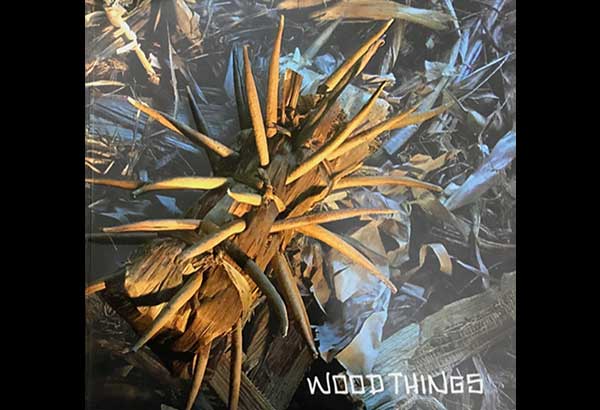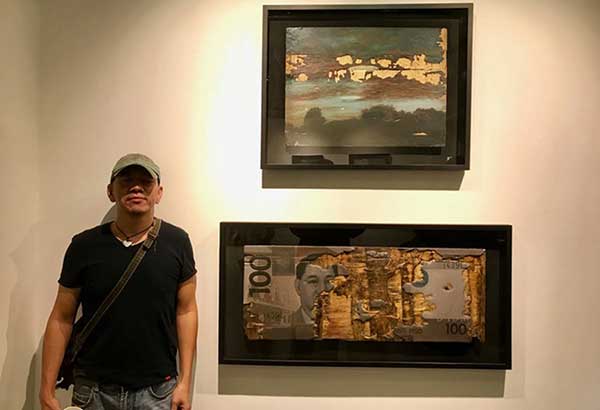A poet of nature
It’s National Artist season again, with the deadline for nominations for the next group of NAs falling last Sept. 30. It’s a triennial exercise that raises some very fundamental questions about how the arts figure in our national life and consciousness, and what we value in art.
There’ll surely be an impressive roster of nominees to review, each name with its own merits to recommend it. But among all those presumptive candidates, the one I’ll be rooting for is a lanky, genial, youthful-looking septuagenarian who goes simply by the name “Junyee,” short for the Luis E. Yee Jr. that only his family and closest friends probably know.

I’ve known Junyee and his work for some time now, but I was even more impressed by its breadth and quality as I listened to him address a large crowd that had gathered for the launch of his artistic biography Wood Things at the CCP lobby last Tuesday.
Like many artists, Junyee has a certain shyness about him that prevents more aggressive self-advertisement, so let me sing his praises for him in the hope that he finally gets the recognition due his lifetime of labors.
If you’ve never met him but read the book (written with grace and deep insight by the equally gifted artist Jose “Bogie” Tence Ruiz), the first thing that will strike you will be the life itself, the engrossing narrative of how a boy born in the hinterlands of northern Mindanao at the height of the Japanese Occupation nurtured a native talent that would, much later in life, see his works celebrated in France, Cuba, Israel, Japan, and Australia, among other cultural capitals.
The boy drew his first inspirations from the bales of scrap paper his father imported to use as wrappers in their general store, bundles that contained American and local comics depicting worlds far removed from Agusan del Norte. Later moving to Cebu, he found a job with a funeral parlor, first as a janitor and a clerk, then as a beautician for corpses, and later as an embalmer, all the while ogling the art supplies in the local department store, never yielding his dream.

Lotsu Manes and his new work
In 1964, he received a scholarship to study Fine Arts at the University of the Philippines, and apprenticed with the renowned sculptor and later National Artist Napoleon “Billy” Abueva. The opportunity opened Junyee’s eyes to a whole new world of modernism, and eventually he broke out on his own, even as the prevailing forces of the 1970s — the psychotropic seductions of Carlos Castañeda on the one hand and the First Quarter Storm on the other — pulled him in different directions. While Junyee held progressive sentiments, Tence Ruiz notes that “He was inherently a maverick individualist who, while recognizing the need for collective actions to affect change, saw how formulaic and uncreative propaganda could get.”
And that’s key to the kind of visionary and yet also political art Junyee would produce over the next four decades — an art that manifests an abiding love of life, and of nature as the bringer of that life. In his preface to the book, artist Hugo Yonzon III writes that “The dominant and recurring theme of his installation is nature or, more precisely, the respect for it. There is none of the theatrics of LED lights or the electronic sounds that characterize such art especially in the Western world. A twig, a pod, a tree bark, local hemp, and then some. Period.”
“Installation” is a word that would inextricably be attached to Junyee’s art, as he explored and promoted the genre well before the term itself became fashionable, always and again drawing on nature for his materials and inspiration, from the seminal “Balag” of 1970 to the installations now dotting the campuses of Diliman and Los Baños, in which latter place he has found his literal and spiritual home, amid the trees and rocks that he never sees just as objects but as bearers of messages, like the 10,000 tombstone-like stumps of wood he laid out on the CCP grounds in 2007 to bemoan illegal logging and the catastrophic flooding it induced.
Junyee is a master sculptor and painter, and a wordsmith as well — his sensitive lyrics add a more personal touch to the book — but he is, ultimately, a poet of nature, who can make wood and stone speak and sing in joy, sorrow, and just the sheer excitement of living.
* * *
Speaking of artists, let me draw your attention to a younger painter in mid-career by the name of Lotsu Manes, whose seventh one-man exhibit titled “Handumanay” (after the Visayan word for keepsake or memorial) is now running at the Eskinita Gallery on the 2nd floor of Makati Cinema Square until Oct. 23.
We’d known Lotsu since he was a small boy running on the beach of our hometown in Alcantara, Romblon, and took notice when he won the Grand Prize in the Shell Art Competition of 1996. “Handumanay” shows him maturing well beyond the meticulous craftsmanship that distinguished his earlier work to a more conceptual understanding of time and memory, and of the preciousness of what remains in his termite-ravaged portraits and landscapes.
At the opening, I was also glad to speak with curator and sculptor Renato “Ato” Habulan, who has been mentoring younger artists like Lotsu toward a less technical and more philosophical appreciation of their own work and vision.
Seeing Lotsu in his prime, chatting with Ato Habulan, and applauding Junyee at his book launch all left me warmly reassured that — even and especially in these terror-stricken times — art, like music as the poet Congreve put it, “hath charms to soothe the savage breast, to soften rocks, or bend the knotted oak.”
* * *
Email me at jose@dalisay.ph and visit my blog at www.penmanila.ph.



















